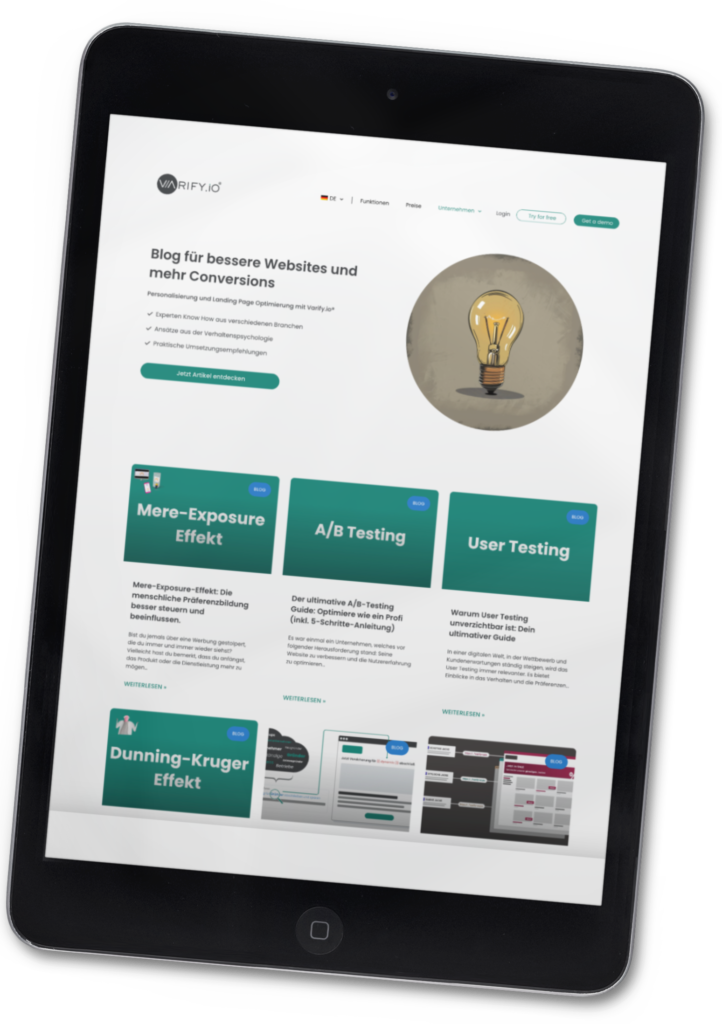The bounce rate is a crucial factor in measuring the user experience on a website.
What is the bounce rate?
It represents the percentage of visitors who leave a website after viewing only one page without navigating to other pages on the site.
A high value may indicate that the website content is not relevant or that the website itself is not user-friendly. But why does it matter? This metric provides valuable insights into your users' behavior and preferences, and can help you optimize your website to provide better user experiences.
Table of contents
What a high or low bounce rate means
The interpretation of the bounce rate depends heavily on the context. For some sites, a high bounce rate might actually be a sign of good performance. For example, blogs, news sites, or event sites where users often find the information they need on a single page.
However, for e-commerce or service-oriented websites, a high bounce rate could indicate problems with the user experience or content. It is important to understand the specific requirements of your website and industry to correctly interpret the bounce rate.
How the bounce rate is measured
Bounce rate is most often measured using web analytics tools such as Google Analytics. These tools track user interactions on your website and calculate the bounce rate by dividing the number of visitors who visit only one page and then leave the website by the total number of visits.
Factors that influence the bounce rate
There are many factors that can affect the bounce rate. Some of them include:
a) Web design and usability: If your website is not intuitive to navigate or if it has an unattractive design, users are likely to bounce. A clean, responsive design and clear navigation can help lower the bounce rate.
b) Quality and relevance of the content: Users come to your website with a specific intention. If the content on your site doesn't meet their expectations or needs, they're likely to bounce. To lower your bounce rate, you should provide high-quality, relevant content that meets your users' needs.
c) Page loading speed: Long loading times are a common cause of high bounce rates. Users expect websites to load quickly, and if they have to wait too long, they are likely to bounce.
d) Mobile optimization: Nowadays, most website views occur via mobile devices. A website that performs poorly or is not displayed properly on mobile devices can cause users to bounce. To avoid this, it's important that your website is optimized for mobile devices.
Strategies to reduce the bounce rate
There are several strategies you can implement to reduce the bounce rate on your website:
1. improvement of page navigation and structure: Clear and intuitive navigation helps users find the information they're looking for faster and easier. This can help reduce the bounce rate, as users are more likely to stay on your site if they find what they're looking for.
2. optimization of the page speed: As mentioned earlier, a slow page can cause users to bounce. You should regularly check your pages for performance issues and make any necessary optimizations to improve loading speed.
3. providing high-quality, relevant content: Users will stay on your website if they find valuable, relevant, and interesting information there. Make sure your content meets the needs of your users and is up-to-date.
4. improving mobile friendliness: A mobile-optimized website is essential these days. You should make sure that your website works well on all devices and is easy to navigate.
Summary and concluding thoughts
Bounce rate is an important indicator of your website's performance. A high bounce rate can indicate problems with your website, while a low bounce rate can indicate that your users are satisfied with the content provided.
It's important to consider this metric in context and implement appropriate optimization strategies to improve the user experience on your website. With the right optimization measures, you can reduce the bounce rate while increasing your users' satisfaction and engagement.
